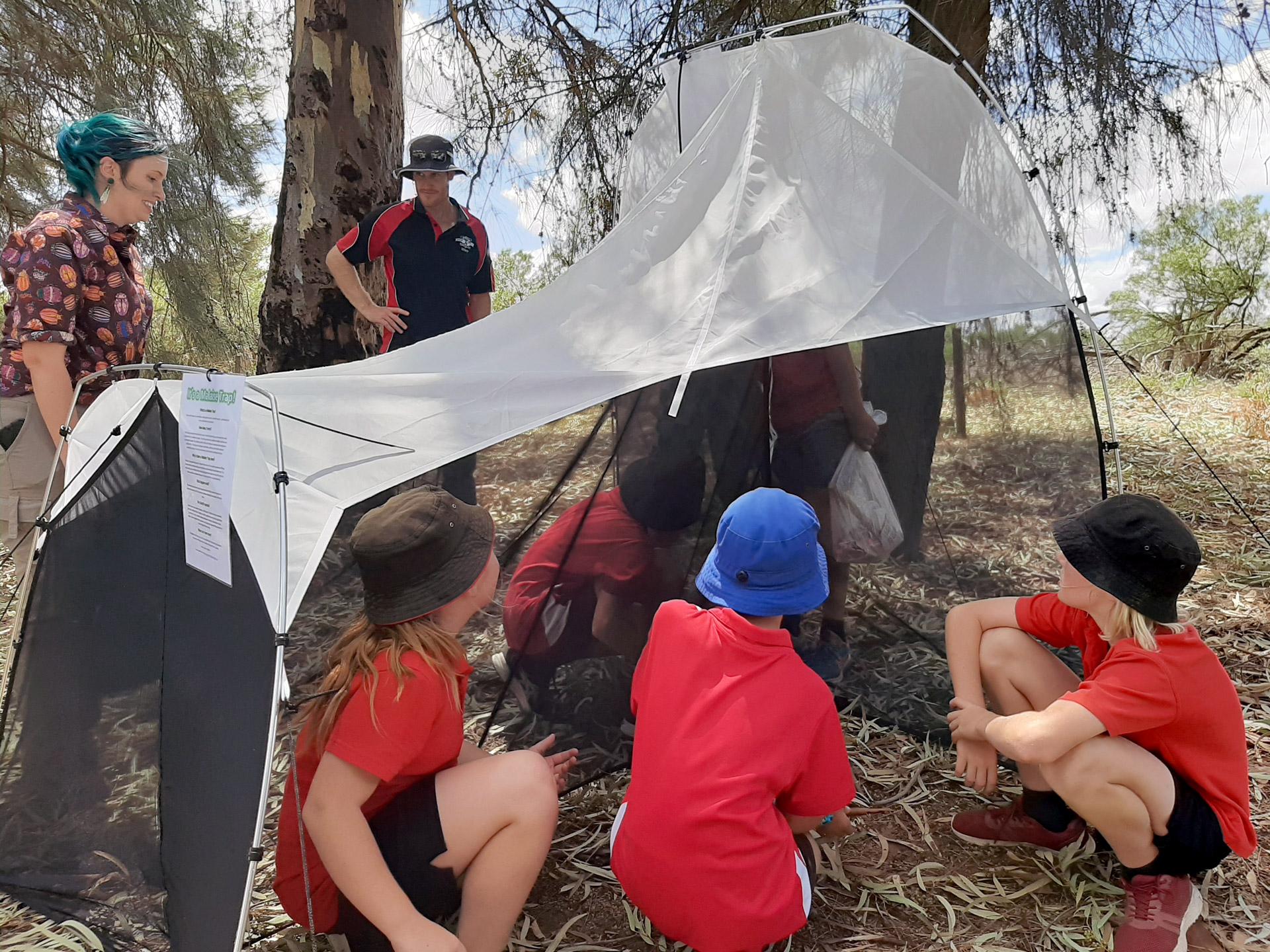Primary school sting nets new wasp species
Four primary schools in regional South Australia have discovered and named new species of wasps as part of a new citizen science project led by the University of Adelaide.

Dr Erinn Fagan-Jeffries and Ramco Primary School students and teacher with their Malaise insect trap. Photo supplied by Ramco Primary School.
The discoveries, published in journal Zootaxa, were made as part of Insect Investigators, a project which connects school students with insect taxonomists, who study the relationship between insects.
Project lead and author of the research paper Dr Erinn Fagan-Jeffries at the University of Adelaide’s School of Biological Sciences said Insect Investigators provided students with opportunities to document their local insect biodiversity.
“We trialled the project at four schools in regional South Australia and were delighted with its success.
“Each of the schools ran a Malaise trap, which catches flying insects such as wasps and flies. I then sorted through the samples collected to find specimens of wasps that were unknown,” says Dr Fagan-Jeffries.
“We were able to determine that each of the schools had collected a species of wasp that was unknown to science, so the students then worked with me to learn about the process of describing the new species and decided on names.”Dr Erinn Fagan-Jeffries
The four schools involved included Macclesfield Primary School in the Adelaide Hills which found its new wasp in the reserve adjacent to the primary school. The new species was named Glyptapanteles drioplanetus, meaning ‘bush wanderer’.
Waikerie Primary School in the Riverland named its new species Miropotes waikerieyeties after Waikerie’s YETies (Youth Environment Team) who ran the insect trap. Ramco Primary School, also in the Riverland, named its Choeras ramcomarmorata, which combines the place name Ramco with the Latin word for ‘marbled’ – because the colouration of the wasp resembled polished marble stone.
Cowell Area School, on the Eyre Peninsula, chose the name Dolichogenidea franklinharbourensis for its species, naming it after the district council Franklin Harbour.
“With less than 30 per cent of our native insects named and described in Australia, it’s increasingly important that we all work together to document our flora and fauna,” Dr Fagan-Jeffries said.
“The idea behind this project was to create opportunities for school students and their wider communities to be involved in the process of taxonomy, particularly for species discovered in their local area.
“We hope, as with all citizen science projects, it inspires them to be more curious about the world around them as well as offering a hands-on, meaningful way to contribute to scientific research.
"Although Insect Investigators is a trial project, it is hoped that it might be possible to expand the program to involve more schools and look at a wider number of insects in the future.
The Insect Investigators Program was supported by the Australian Citizen Science Association, and is part of a larger species discovery project supported by the Australian Biological Resources Study, The University of Adelaide’s Environment Institute, and The South Australian Museum.




